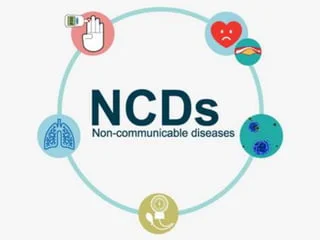The Fight is Far From Over- Expert Warns Over Non-Communicable Diseases
Prof. Omotoso Calls for Increased Research, Education, and Community Engagement to Combat NCDs

The fight against non-communicable diseases (NCDs) is far from being over and Nigerians must remain steadfast in efforts to combat them, a medical expert, Prof. Ayodele Omotoso, has warned.
Omotoso, who is of the Department of Medicine, University of Ilorin, gave the warning while reflecting on the institution’s 272nd inaugural lecture held on Thursday.
He said the diseases could be curtailed through research, education and community engagement.
“Governments and stakeholders should enhance research development, inter-disciplinary collaboration, community engagement and curriculum integration.
“We should also resuscitate public lectures on NCDs and other health-related matters,” Omotoso said.
He called for policy implementation, access to health care services, public awareness campaigns, funding and resources, private sector involvement, the intervention of non-governmental organisations (NGOs) and international collaboration.
The News Agency of Nigeria (NAN) reports that Omotoso had in the inaugural lecture, which he delivered, urged the three tiers of government and stakeholders to invest in the control of NCDs.
He had contended that this would greatly help to improve health conditions and life expectancy.
NAN reports that the lecture, titled “Of the Heart, for the Heart and from the Heart: Communicating the non-communicables heartily”, was about diseases related to the heart.
Omotoso explained that the human heart is a three-layer muscular organ, roughly the size of a closed fist, weighing 250-300 grammes in the female and 300-350g in the male.
“Located slightly left of the centre in the chest cavity, the human heart has four chambers, which are the right atrium, right ventricle, left atrium and left ventricle which deal with blood circulation in the body.
“NCDs are chronic diseases that are typically non-contagious, non-infectious and not transferrable from person to person.
“They are responsible for a growing burden globally, causing about 43 million deaths in 2021,” he had said.
Omotoso had added that while the diseases are commonly linked to older populations, approximately 18 million NCD-related deaths occur before the age of 70.
“These diseases have also emerged as a significant public health challenge in Nigeria, contributing to a substantial burden of morbidity and mortality.
“Several risk factors contribute to the rising incidence of NCDs in Nigeria, which can be categorised into behavioral or lifestyle, environmental and socio-economic determinants.
“The four major groups of diseases that constitute 82 percent of all NCDs are cardiovascular diseases, cancers, respiratory diseases and diabetes mellitus,” he said.
Omotoso went on to note that the diseases have four main lifestyle-related risk factors in common, which include cigarette smoking, harmful alcohol use, unhealthy diets and physical inactivity.
He said these diseases also share four metabolic risk factors which are hypertension, overweight and obesity, hyperglycaemia and dyslipidaemia.
“As I reflect on the title of this lecture, I am reminded of the core values that have guided my work.
“It is my hope that these values will continue to inspire future generations of researchers, educators and health care professionals,” Omotoso stated.
Credit NAN: Text excluding Headlines.




